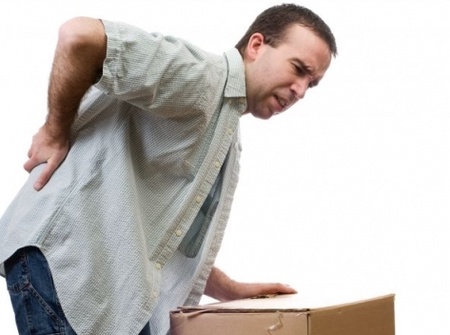'Bend your knees and keep your back straight' is the mantra for lifting heavy objects but new research led by University of Aberdeen academics suggests this approach may not work for everyone when it comes to back care.
Their work, which has just won the best paper at the annual meeting of the Society for Back Pain Research, reveals that the shape of our spines alters the way in which we can lift safely.
The finding means that guidelines may work more successfully if tailored to suit individual shapes rather than as ‘one size fits all’ approach.
Anastasia Pavlova, lead author of the paper from the University of Aberdeen, said: “The bones making up our lower back - the lumbar spine - form an inward curve that makes the hollow of our back; and some of us are more curvy than others!
“What we showed was that the curve of our lower backs is specific to each individual, a bit like a fingerprint. Interestingly, this affects the way we lift objects from the floor, so that those with 'curvy' spines tend to bend over, or stoop, to lift a box whereas those with straighter spines tend to bend their knees and squat.”
The research team, which also included Dr Judith R Meakin from the University of Exeter, Dr Kay Cooper from Robert Gordon University and Dr Rebecca J Barr and Professor Richard M Aspden from the University of Aberdeen, studied pain-free volunteers aged between 18 and 65.
Images were taken of their spines using a magnetic resonance imager (MRI) in six postures ranging from leaning backwards to bending forwards as if to touch their toes.
A special computer method called ‘shape modelling’ was then used on each of their images to describe the shape of their lumbar spine, whether curvy or straight.
The volunteers then attended a motion analysis laboratory where special cameras were used to video them while they lifted a box, with weights inside it, from the floor in the way they found most comfortable. A weight that was ‘moderately heavy’ was chosen by each person and these varied from six to 15 kg.
Researchers then compared how people with different spine shapes moved when lifting the box.
Professor Aspden added: “Our research showed that not only is the curve of our lower back specific to each individual but it also affects the way we lift objects from the floor. The degree to which spines were curvy or straight correlated with whether the volunteers stooped or squatted to lift the objects from the floor.
“We’re clearly not all the same, so should guidelines be telling us to lift in the same way? Giving more attention to our individual spine shape could allow these guidelines to be better tailored to individuals.”
“Back pain is costly to the NHS and employers. It is common in manual occupations involving lifting and it can be devastating for the patient when they are no longer capable of performing their job. Understanding the mechanisms behind occupational back pain can allow for more appropriate prevention strategies.”
Dr Adam Al-Kashi, Head of Research and Education for the charity BackCare said: “We are all unique, yet we are all human, and somewhere in between we hope to strike a clinically relevant balance. By challenging some popular myths about posture and lifting, this work serves to shift that balance towards a more tailored approach.”
The academic abstract titled Intrinsic shape of the lumbar spine and its effect on lifting manoeuvres was published in The Bone & Joint Journal, Orthopaedic Proceedings, and can be viewed online at http://www.bjjprocs.boneandjoint.org.uk/content/96-B/SUPP_4/17.abstract
It was awarded best paper at the annual meeting of the Society for Back Pain Research supported by BackCare, the charity for back and neck pain.
Anastasia Pavlova was supported by a PhD studentship donated by Roemex Ltd to the Aberdeen Centre of the Oliver Bird Rheumatism Programme at the Nuffield Foundation.


